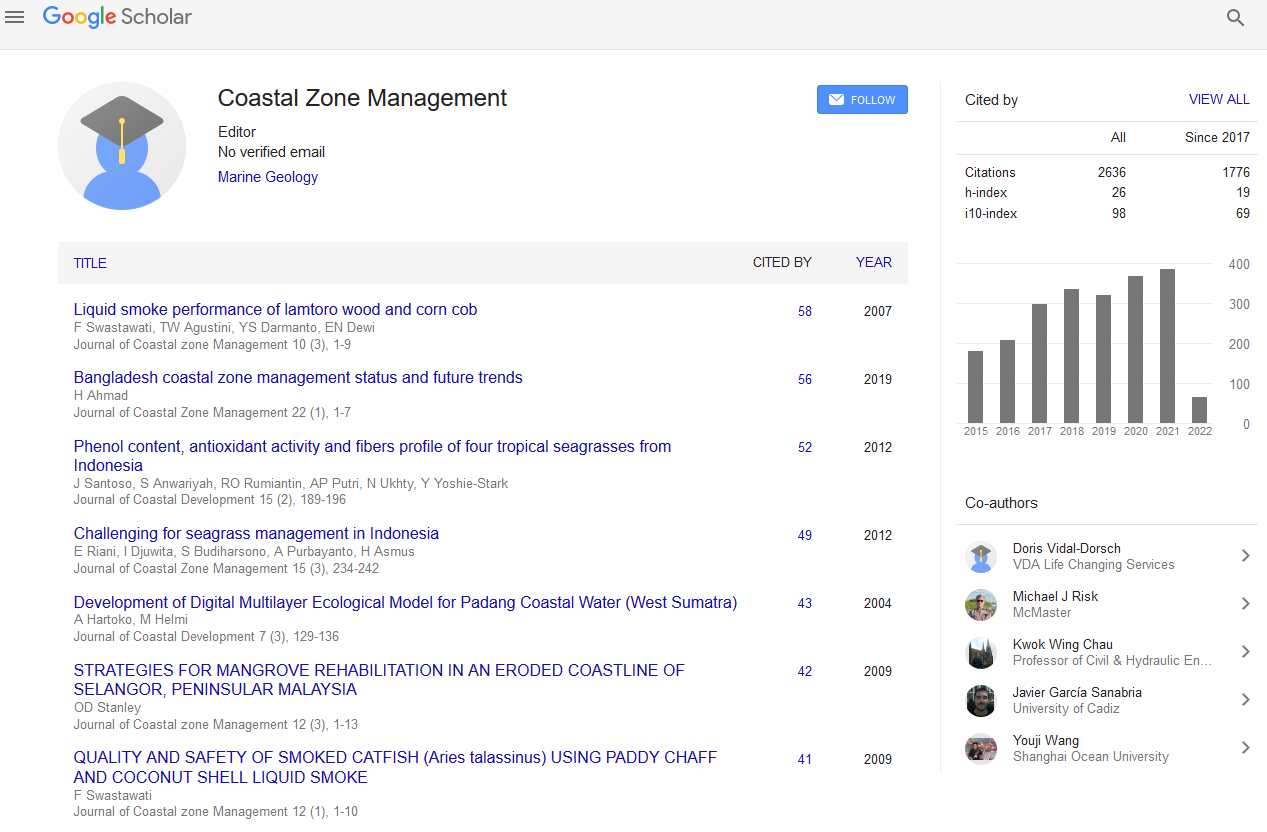Indexed In
- SafetyLit
- RefSeek
- Hamdard University
- EBSCO A-Z
- OCLC- WorldCat
- Publons
Useful Links
Share This Page
Journal Flyer

Open Access Journals
- Agri and Aquaculture
- Biochemistry
- Bioinformatics & Systems Biology
- Business & Management
- Chemistry
- Clinical Sciences
- Engineering
- Food & Nutrition
- General Science
- Genetics & Molecular Biology
- Immunology & Microbiology
- Medical Sciences
- Neuroscience & Psychology
- Nursing & Health Care
- Pharmaceutical Sciences
Abstract
GIS-Based Analysis and Modeling of Coastline Erosion and Accretion along the Coast of Sindh Pakistan
Syed Ghulam Mohayud Din Hashmi and Sajid Rashid Ahmad
To investigate coastline changes, more research remains to be done on the development and use of innovative and functional geospatial techniques and procedures. This research focused on the integration of remote sensing, Geographic Information Systems (GIS) and modelling techniques to provide meaningful interrelationship on the spatial and temporal dynamics of coastline changes along Keti-Bunder and Kharo-Chann in Indus Delta. Data were extracted from Multi Spectral Scanner (MSS), Thematic Mapper (TM) and (Advanced Space borne Thermal Emission and Reflection Radiometer) ASTER images having the duration of thirty eight years starting from 1973 to 2011. Object based image analysis technique was used to extract the water on the criterion of (Normalized Difference Water Index) NDWI, (Modified Normalized Difference Water Index) MNDWI and threshold level slicing. Topographic maps were also used to extract the topographic information. Digital Shoreline Analysis System (DSAS) was used to analyse and predict rates of coastline change. The correlation between the calculated values of shoreline using linear regression equation 2011 and the values which was extracted from the remote sensing data of the same year having the average percentage accuracy is almost 92%. It means linear regression can be used to model the coastal erosion and accretion. The linear regression results highlighted temporal changes which are likely to occur along the coastline. Results showed that erosion rate of KetiBunder and Kharo-Chann is 16.54 and 63.79 meter per year along the coastline respectively. The areas which can be eroded and accreted in year 2020 will be almost 28.6 square kilometres and 3.6 square kilometres respectively.

